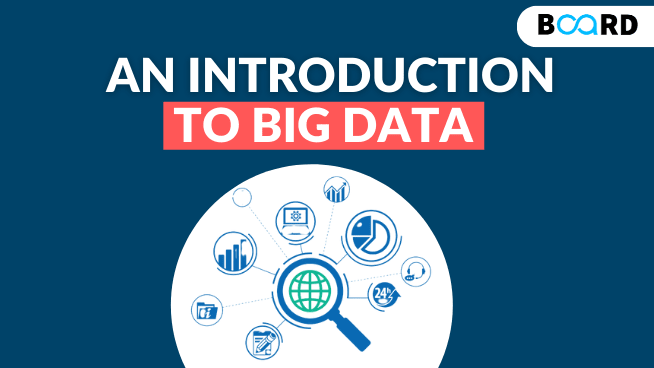Mastering Big Data and Data Warehousing
Introduction to Big Data

Big Data is a blanket term for the non-traditional strategies and technologies needed to gather, organize, process, and gather insights from large datasets.
What makes Big Data different from any other large amount of data stored in relational databases is its heterogeneity. The data comes from different sources and has been recorded using different formats.
While the problem of working with data that exceeds the computing power or storage of a single computer is not new. The pervasiveness, scale, and value of this type of computing have greatly expanded in recent years.
Types of Big Data
Three different ways of formatting data are commonly employed:
1. Structured Data
This type of data can be processed, sorted, analyzed, stored, and retrieved in a fixed format. Structured data can be easily accessed by a computer with the help of search algorithms.
2. Unstructured Data
Unlike structured data, unstructured data is not present in any particular format. This data is a combination of various different types of data like text files, images, videos, etc. It is usually heavier in size.
3. Semi-Structured Data
It contains both structured as well as unstructured information. That is, it may not be present in a particular format but may have segments that are formatted properly or vice-versa.
Characteristics Of Big Data
1. Volume
The name Big Data itself is related to a size that is enormous. The size of data plays a very crucial role in determining the value of data. Also, whether a particular data can actually be considered Big Data or not, is dependent upon the volume of data. Hence, 'Volume' is one characteristic that needs to be considered while dealing with Big Data.
2. Variety
The next aspect of Big Data is its variety. Variety refers to heterogeneous sources and the nature of data, both structured and unstructured. In earlier days, spreadsheets and databases were the only sources of data considered by most the applications. Nowadays, data in the form of emails, photos, videos, monitoring devices, PDFs, audio, etc. are also being considered in the analysis applications. This variety of unstructured data poses certain issues for storage, mining, and analyzing data.
3. Velocity
The term 'velocity refers to the speed of generation of data. How fast the data is generated and processed to meet the demands, determines the real potential of the data. Big Data Velocity deals with the speed at which data flows in from sources like business processes, application logs, networks, social media sites, sensors, Mobile devices, etc. The flow of data is massive and continuous.
4. Variability
This refers to the inconsistency which can be shown by the data at times, thus hampering the process of being able to handle and manage the data effectively.
What Does a Big Data Life Cycle Look Like?
While approaches to implementation differ, there are some commonalities in the strategies and software that we can talk about generally. While the steps presented below might not be true in all cases, they are widely used.
The general categories of activities involved with big data processing are:
- Ingesting data into the system
- Persisting the data in storage
- Computing and Analyzing data
- Visualizing the results
Common Tools for Big Data
1. Hadoop
It is an open-source software solution designed for working with big data. The tools in Hadoop help distribute the processing load required to process massive data sets across a few—or a few hundred thousand—separate computing nodes.
2. MapReduce
As the name implies, it helps performs two functions: compiling and organizing (mapping) data sets, then refining those into smaller, organized sets used to respond to tasks or queries.
3. Spark
It is also an open-source project from the Apache foundation, it is an ultra-fast, distributed framework for large-scale processing and machine learning.
Conclusion
According to Forbes, about 2.5 quintillion bytes of data are generated every day. Nonetheless, this number is just projected to constantly increase in the following years (90% of stored data nowadays has been produced within the last two years). This makes the use of Big Data extremely important in this digital age. Now that you've been introduced to the concept of Big Data, it is time to get into it and study it thoroughly to advance your career.
If you are interested in Big Data and want to learn more about it, sign up for Board Infinity's Big Data course and get mentored directly by industry experts, and get certified!
Go through our Big Data video below to know more about Big Data:
